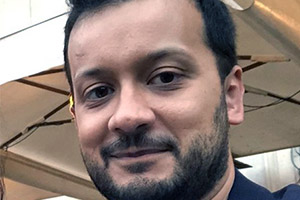Andrew Shah talks about Diagnostic Radiology and Radiation Protection Physics
Andrew is Head of Radiation Protection at East and North Hertfordshire NHS Trust.
- Programme
- Healthcare Science
- Role
- Healthcare Science
Why did you choose a career in healthcare science?
I always wanted a career where I could help people. This career has allowed me to use academic training in physics to help improve patient care across a number of NHS trusts.
What does a typical day involve?
The role of a clinical scientist in diagnostic radiology and radiation protection physics is very varied! We work with departments using ionising radiation for patient x-ray imaging – to ensure staff and patients are safe. A typical day might include reviewing working practices to assess staff safety, designing shielding requirements for x-ray rooms and reviewing radiation dose levels for staff across our trusts. We advise on the specification of advanced imaging equipment such as CT scanners and audit patient radiation dose levels before advising on any changes to clinical practice for patient imaging.
How does your job impact on patient health?
We work with trusts to help ensure the right patient has the right imaging examination at the right time. Working with other professions we advise on optimisation of equipment to ensure image quality is fit for purpose while keeping radiation dose as low as possible.
What would you say to someone thinking about a career in healthcare science?
Healthcare science is incredibly rewarding with good career development and opportunities to improve patient care using evidence-based practice. There are a wide range of science specialties in healthcare, if you have an interest in science or come from a scientific background explore the national school website to see what careers are available.
